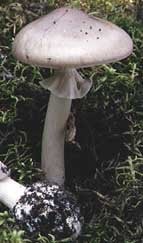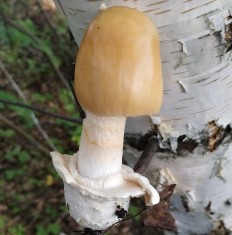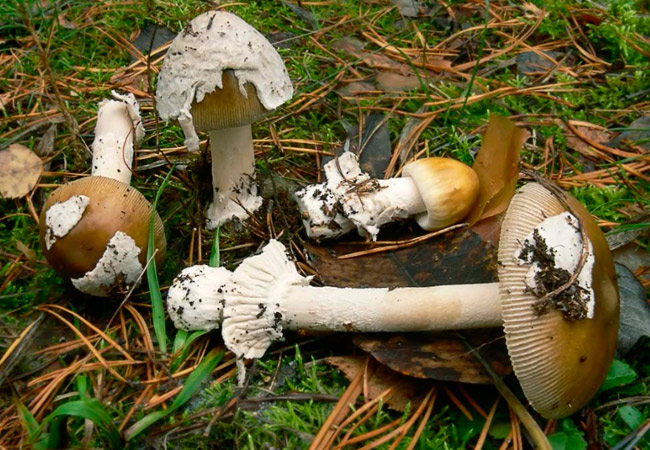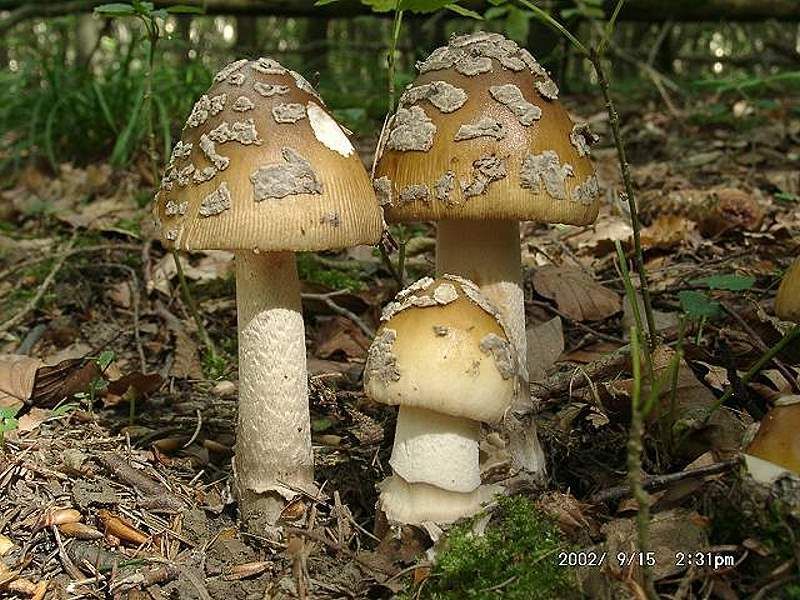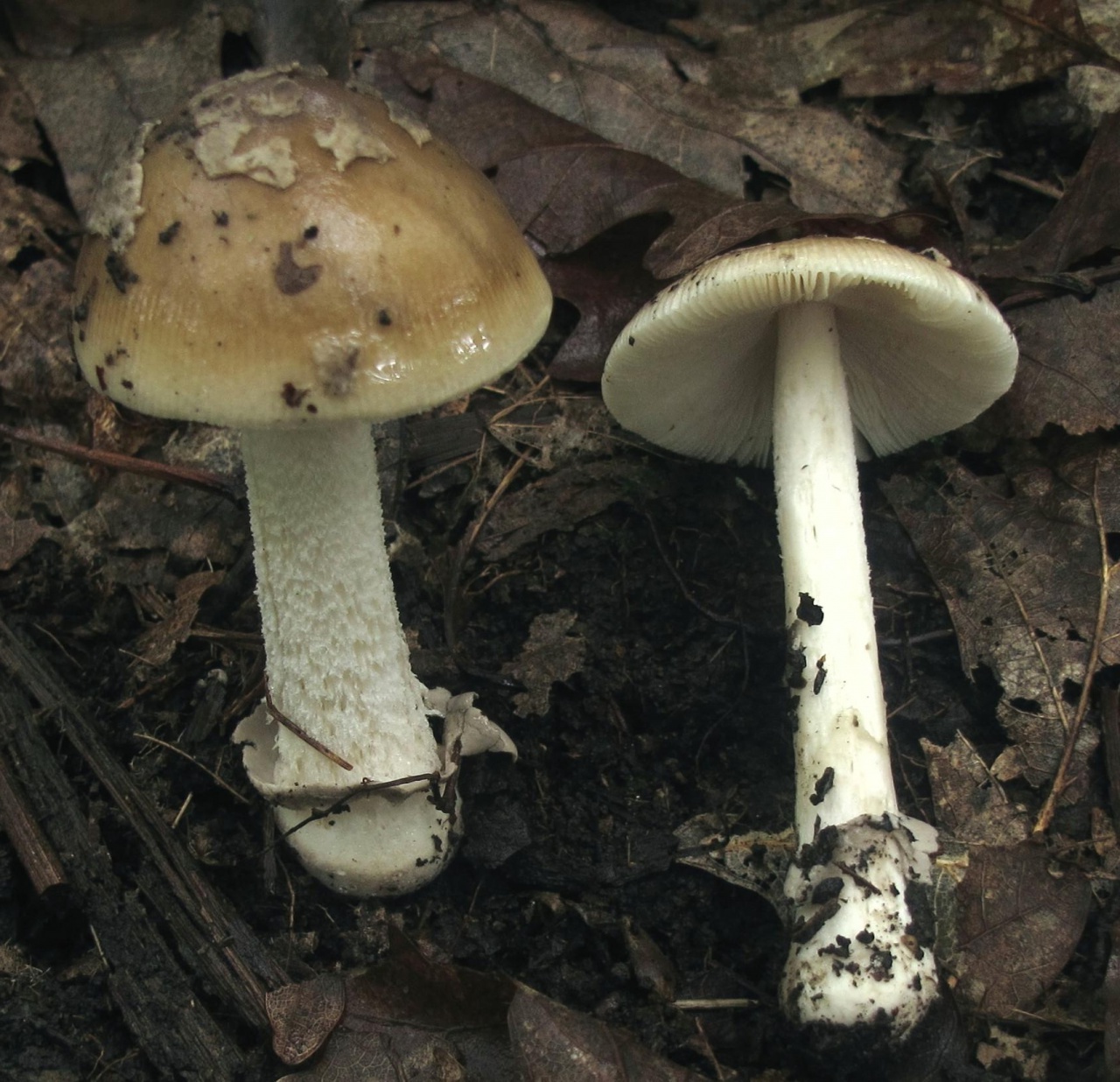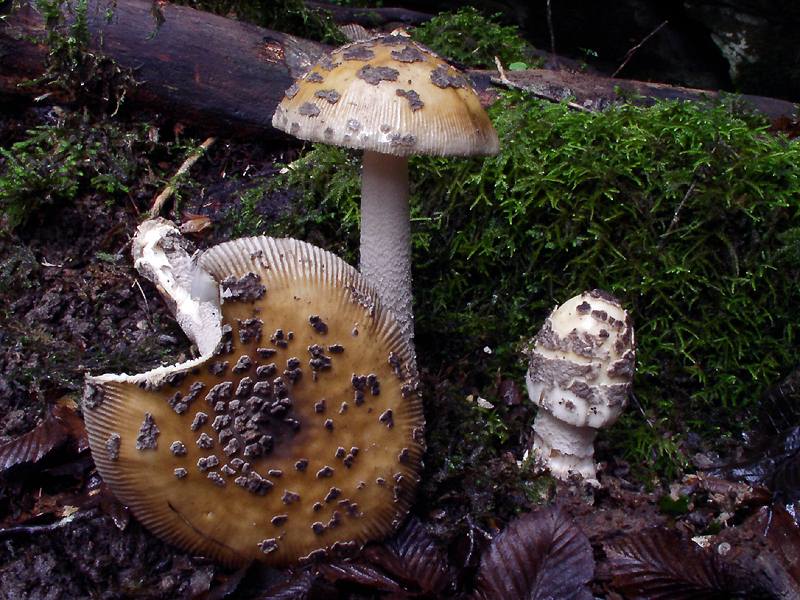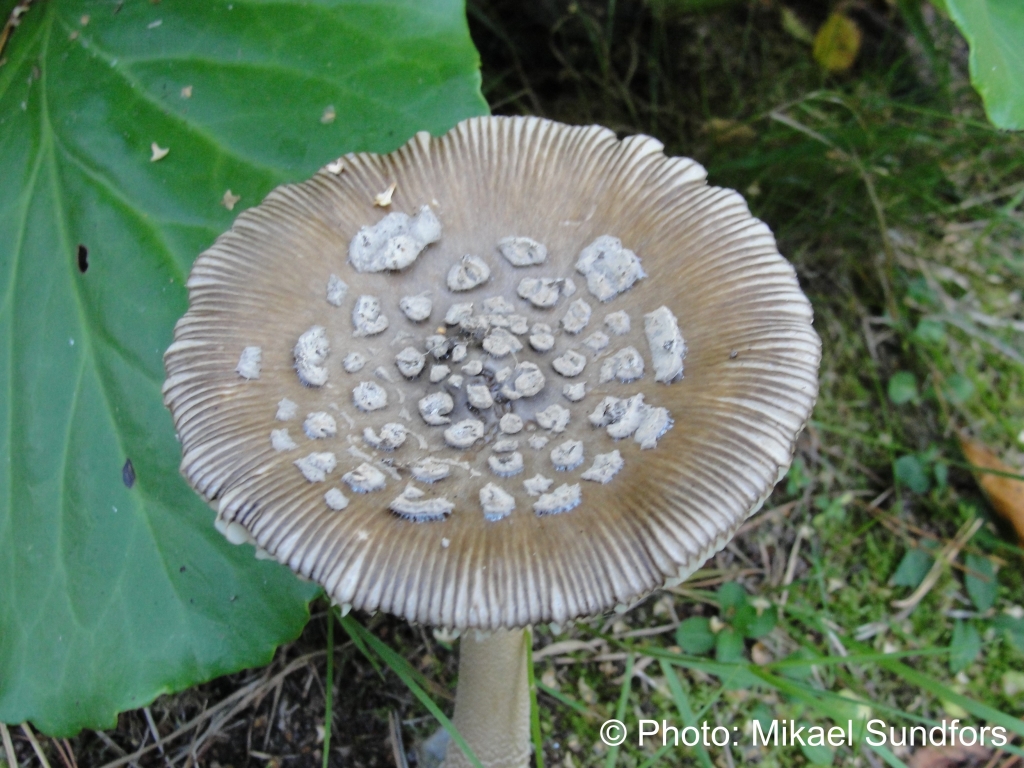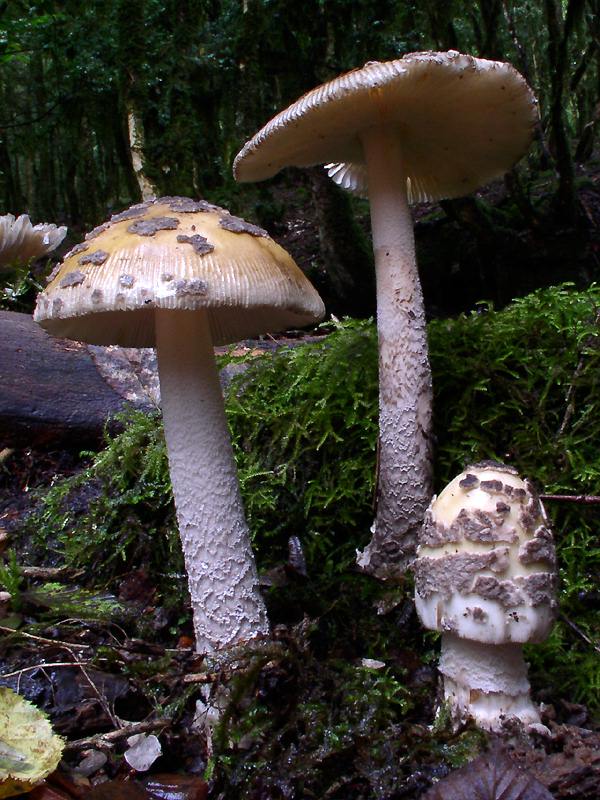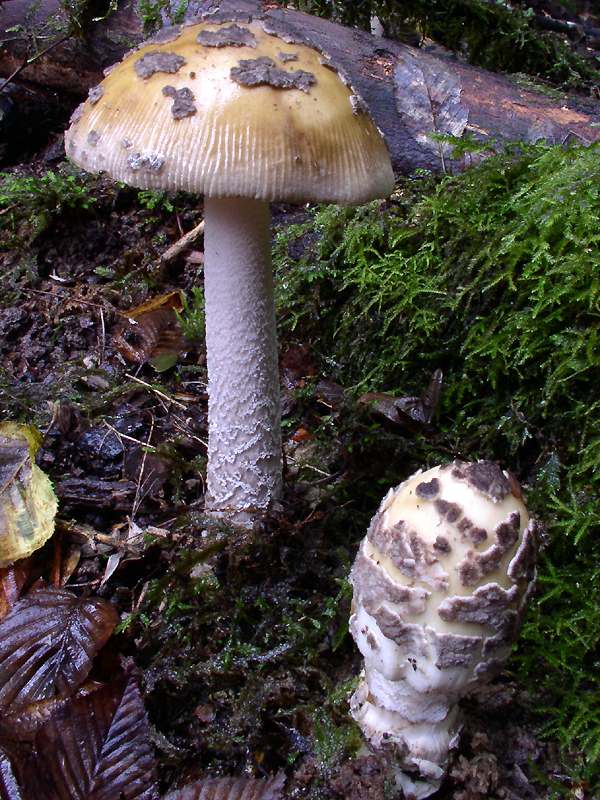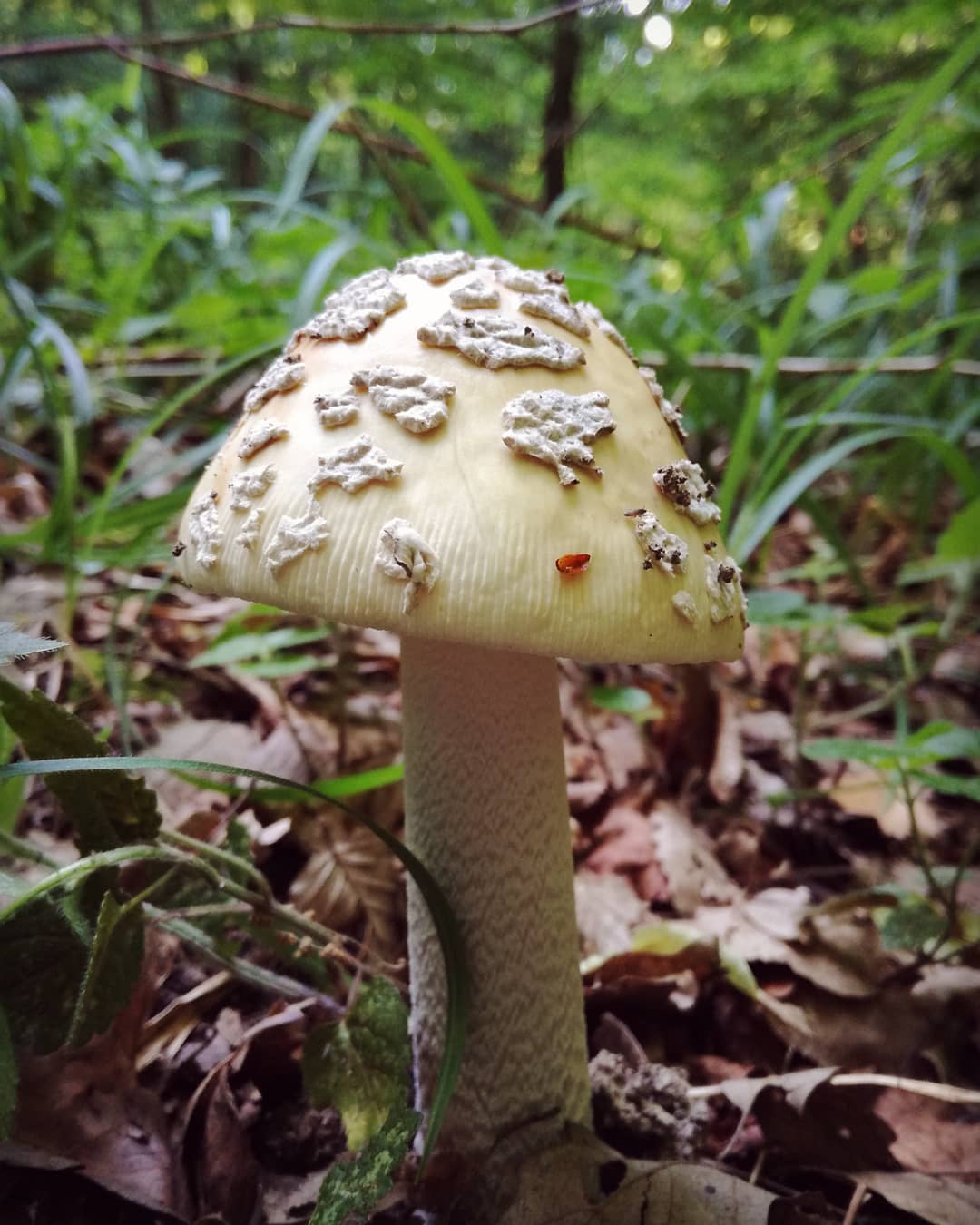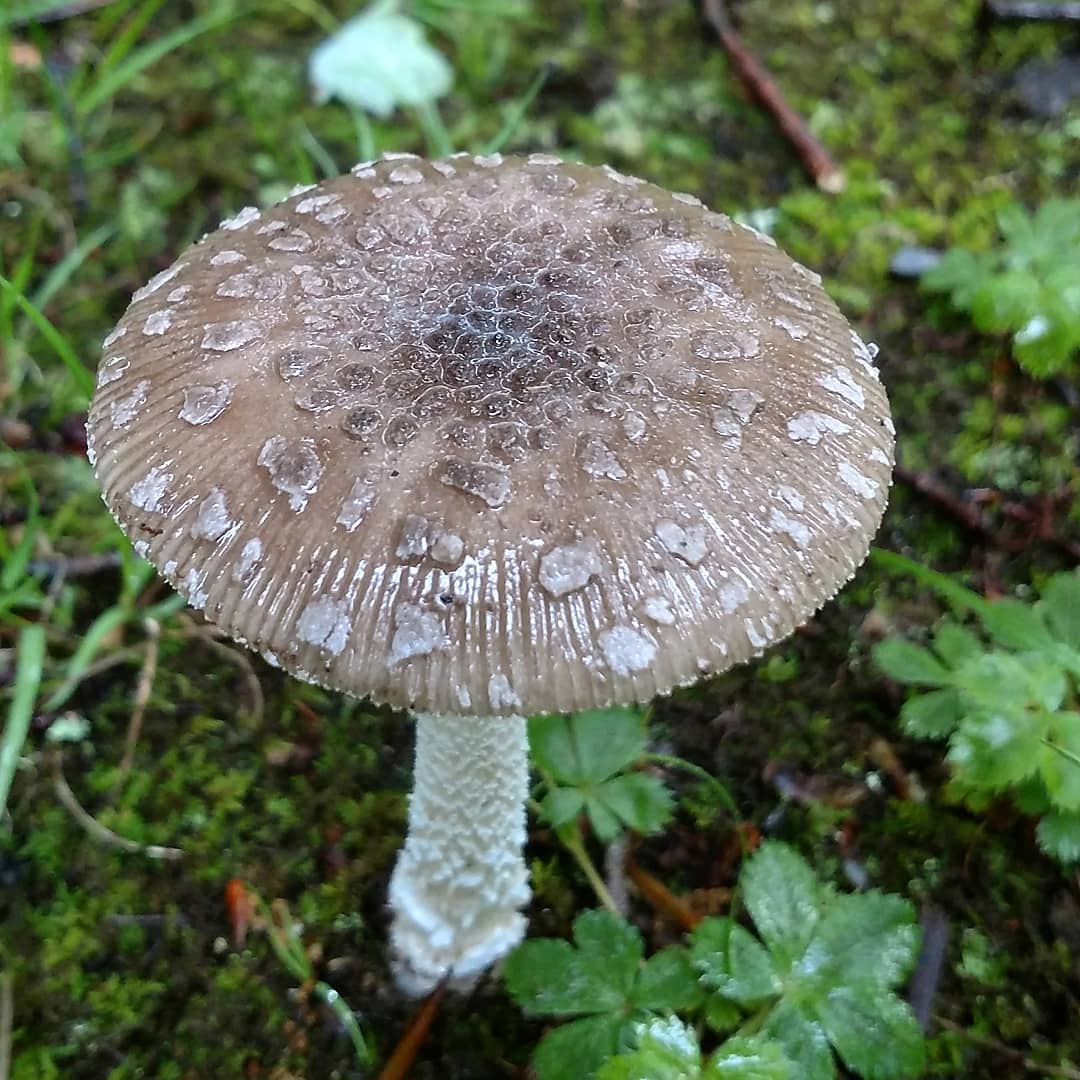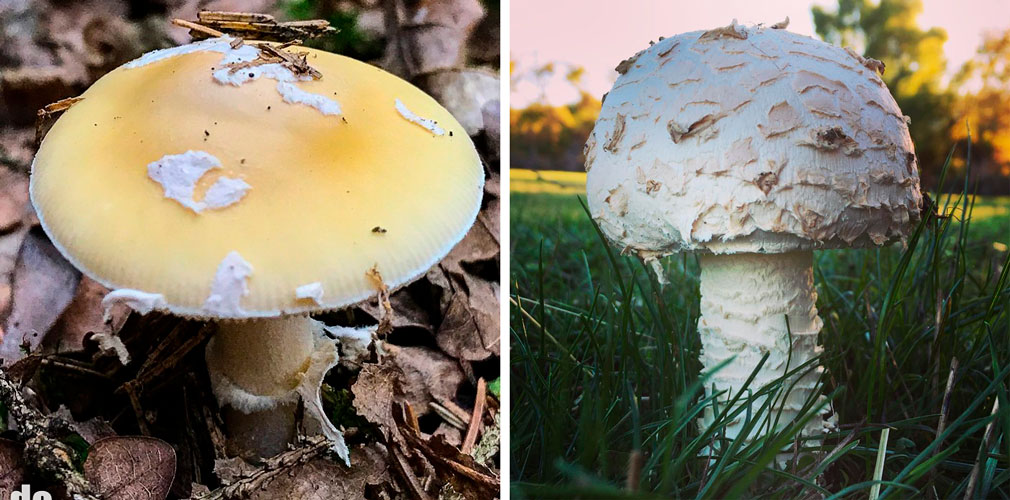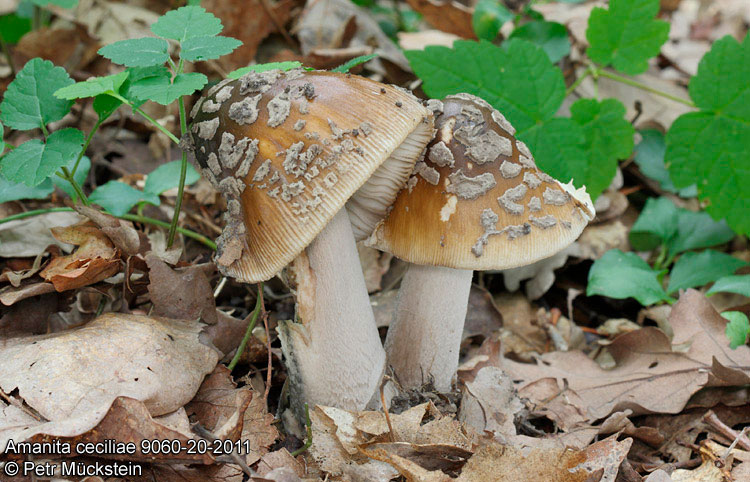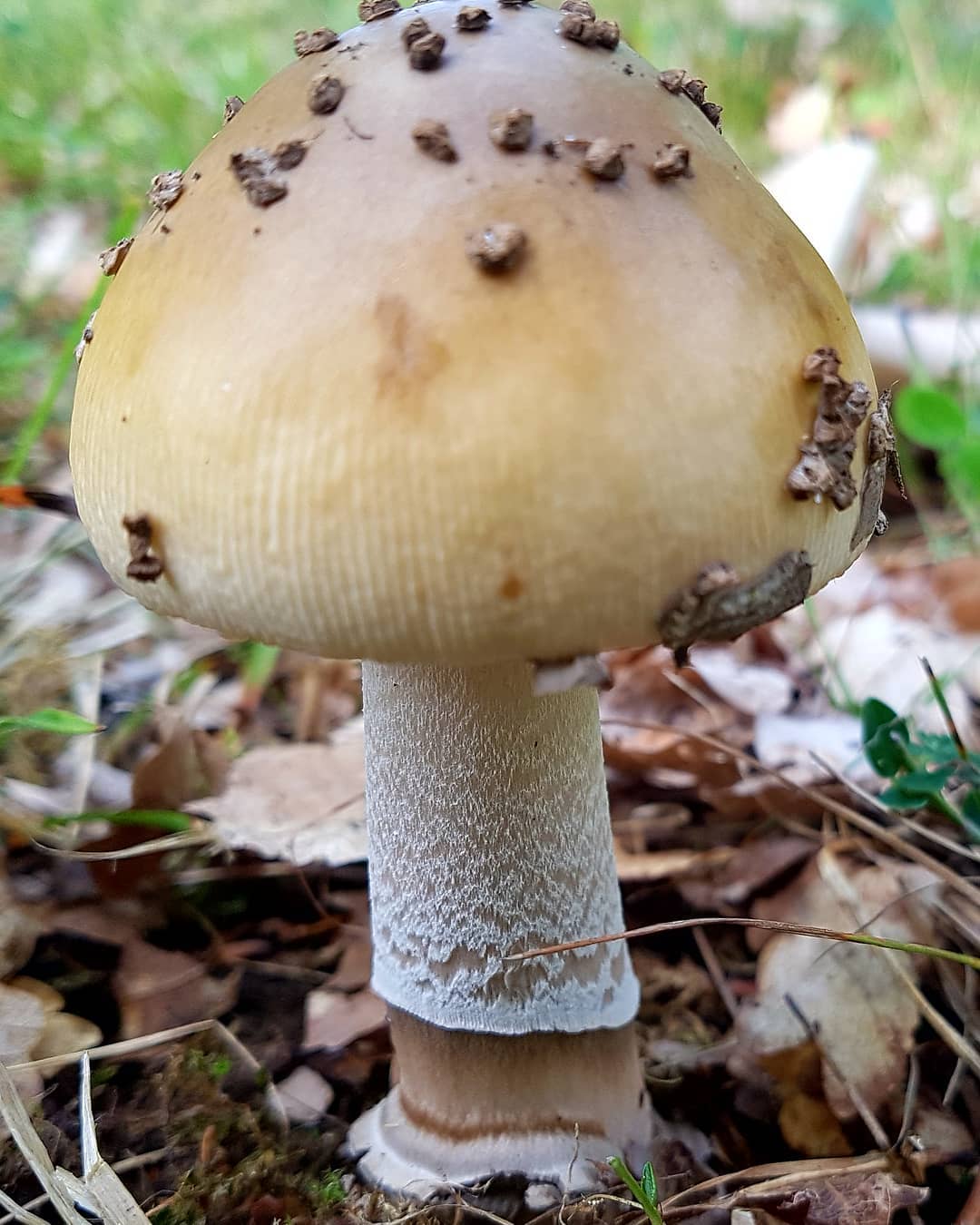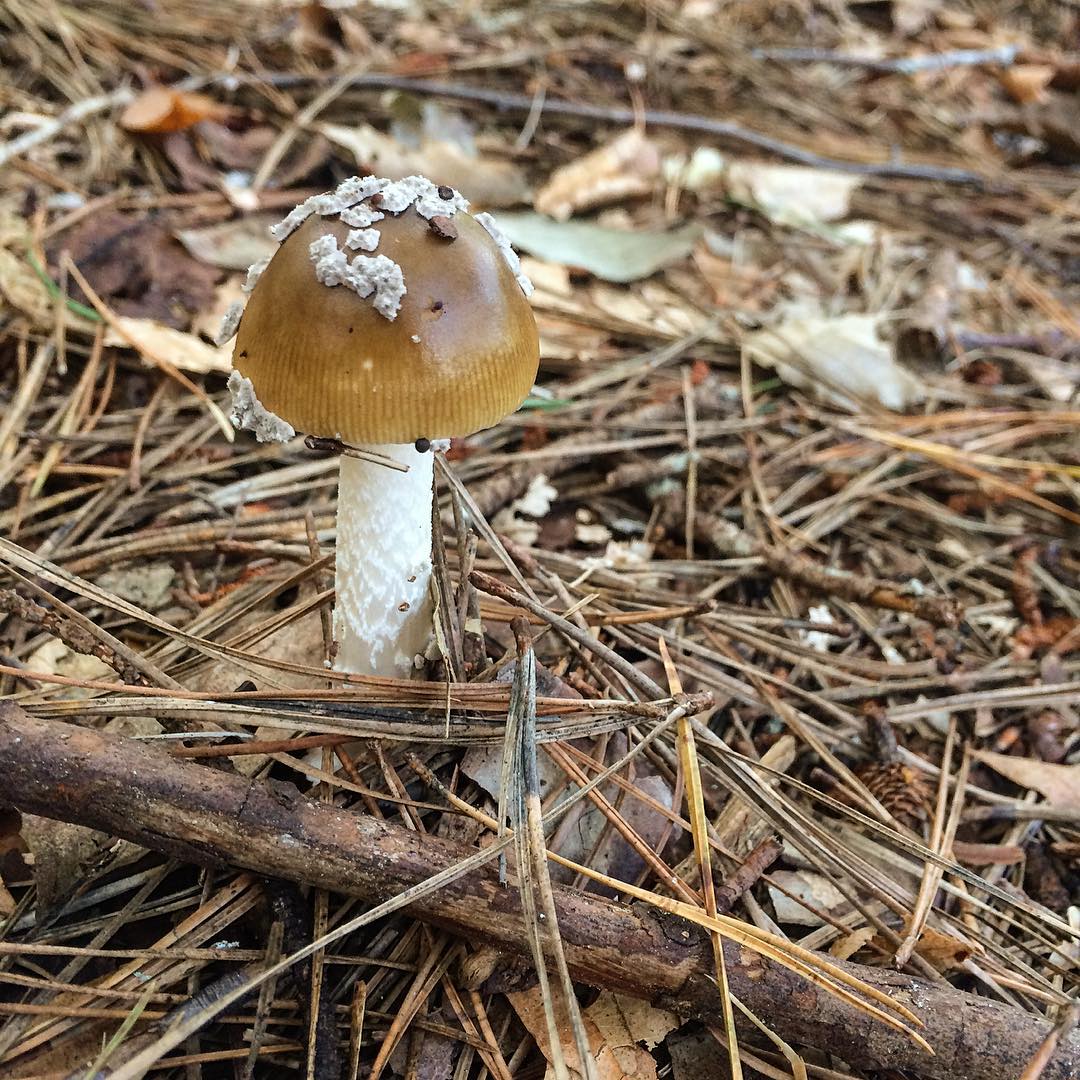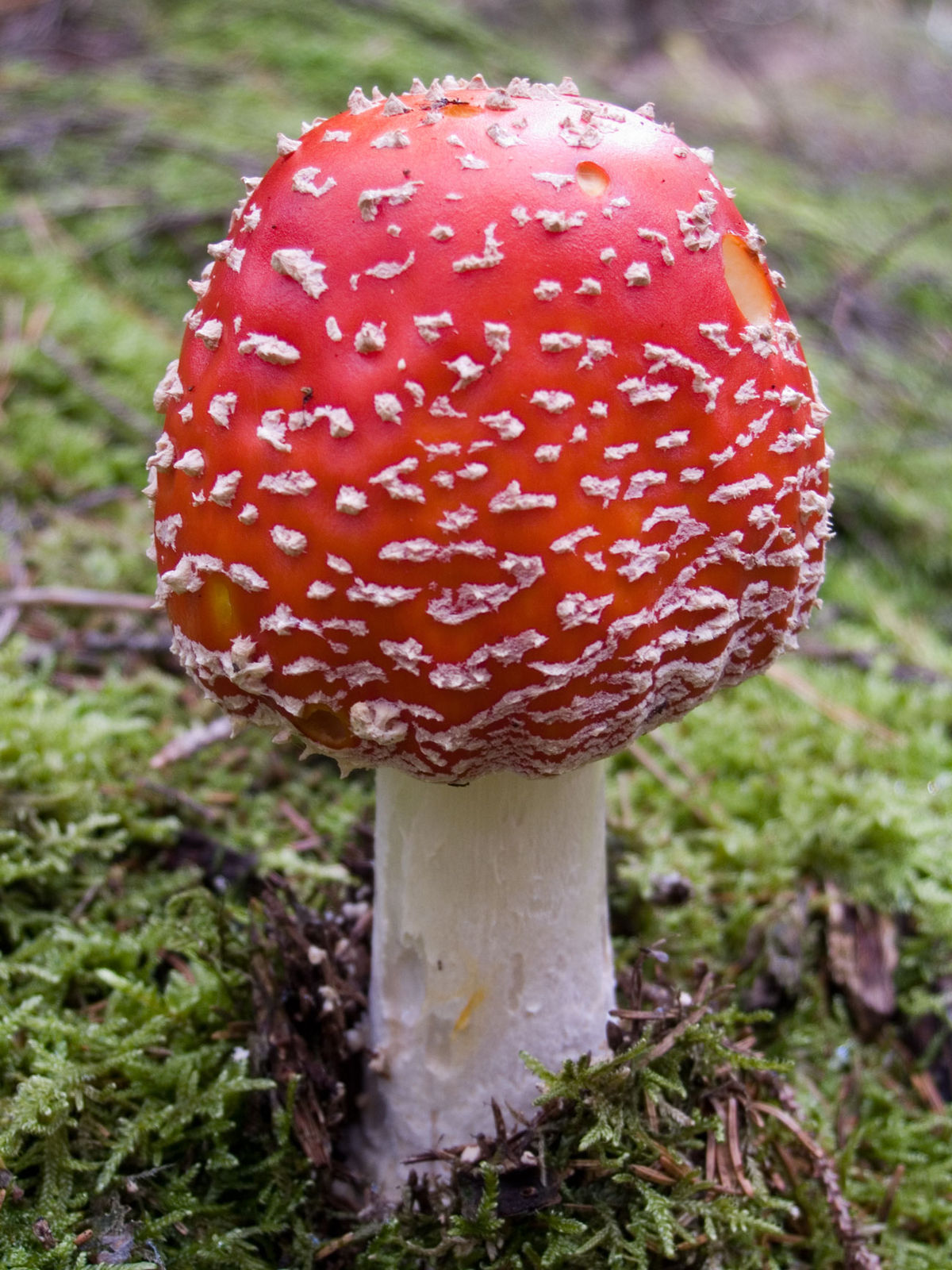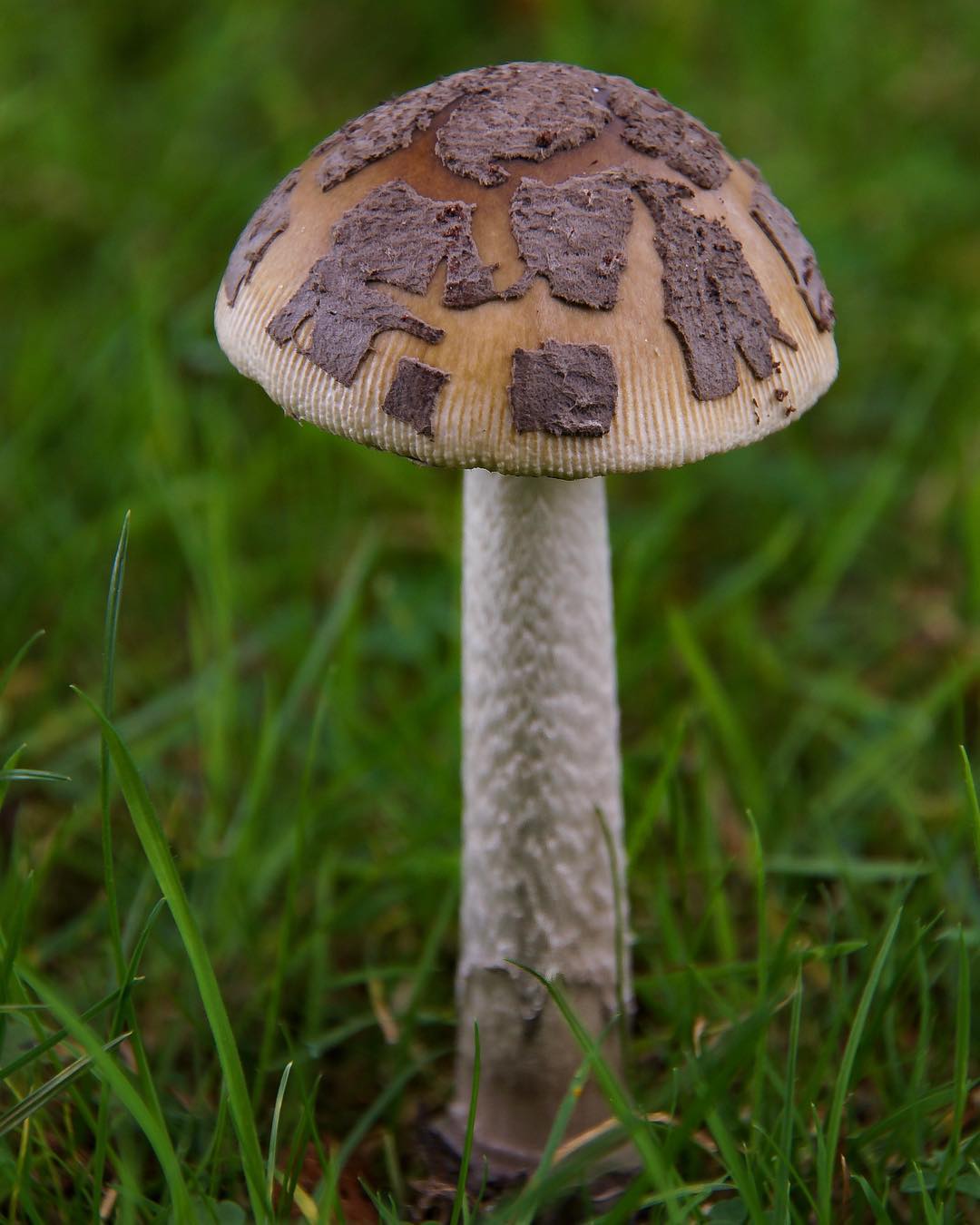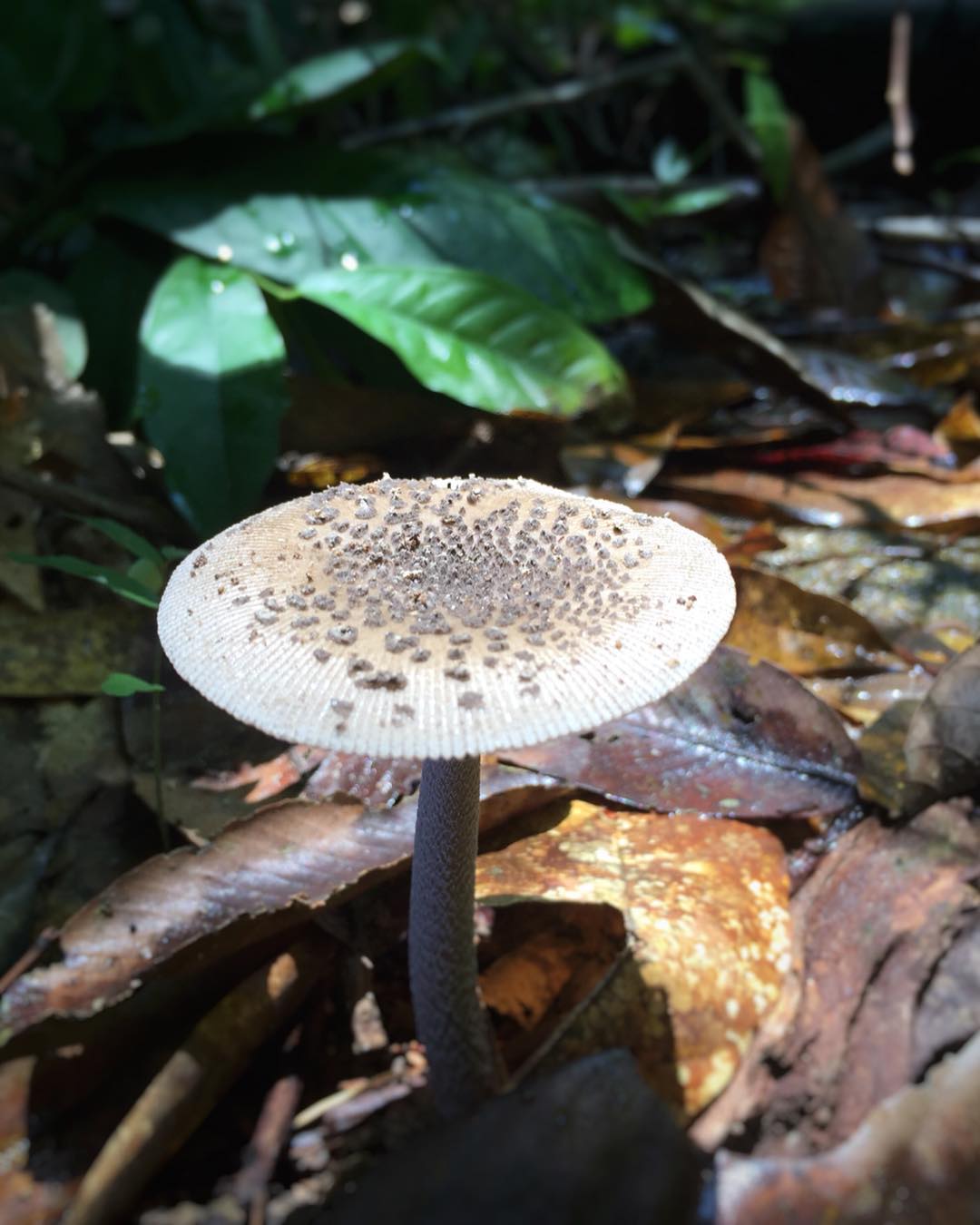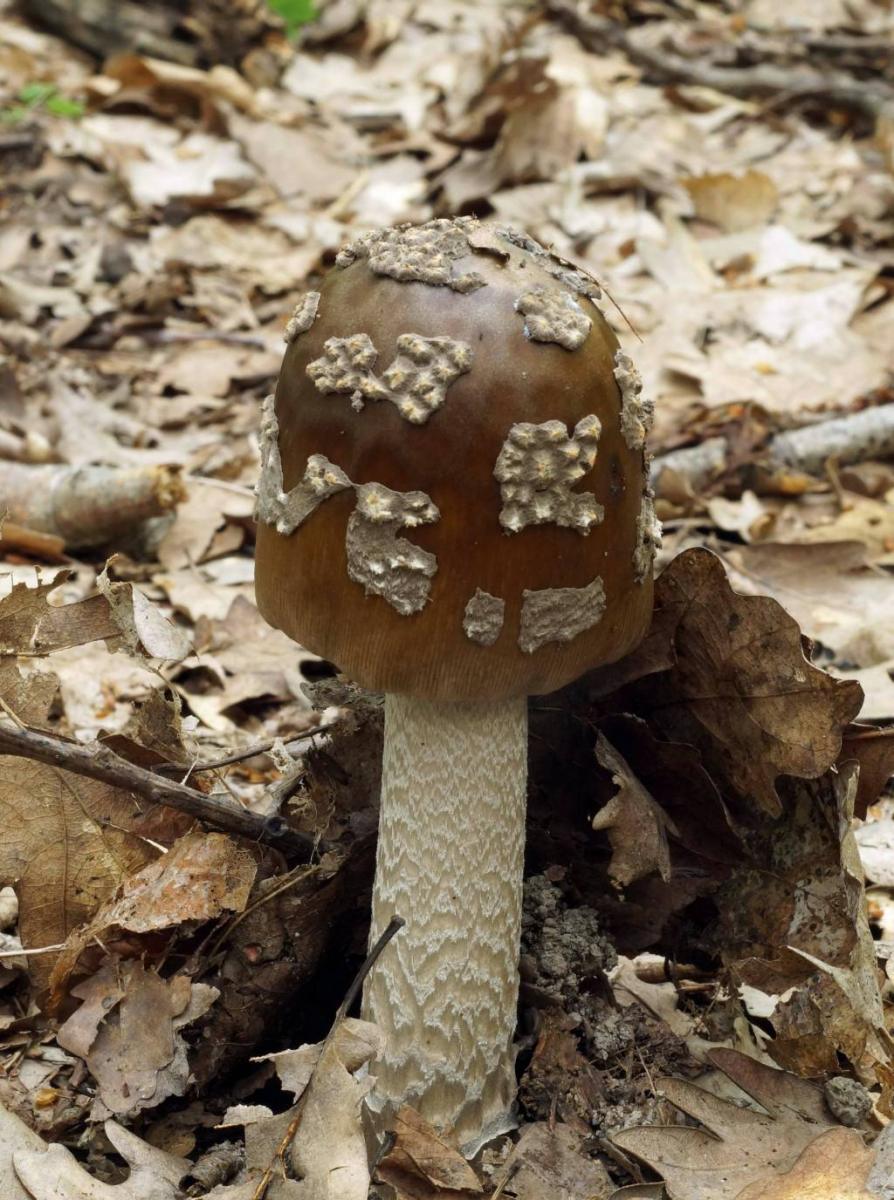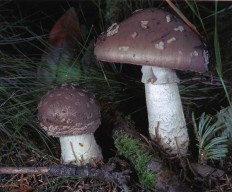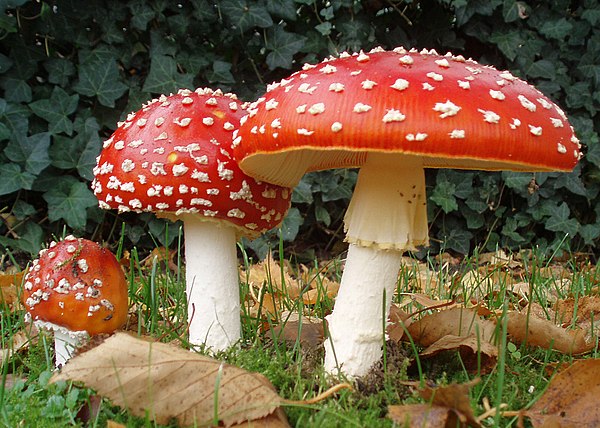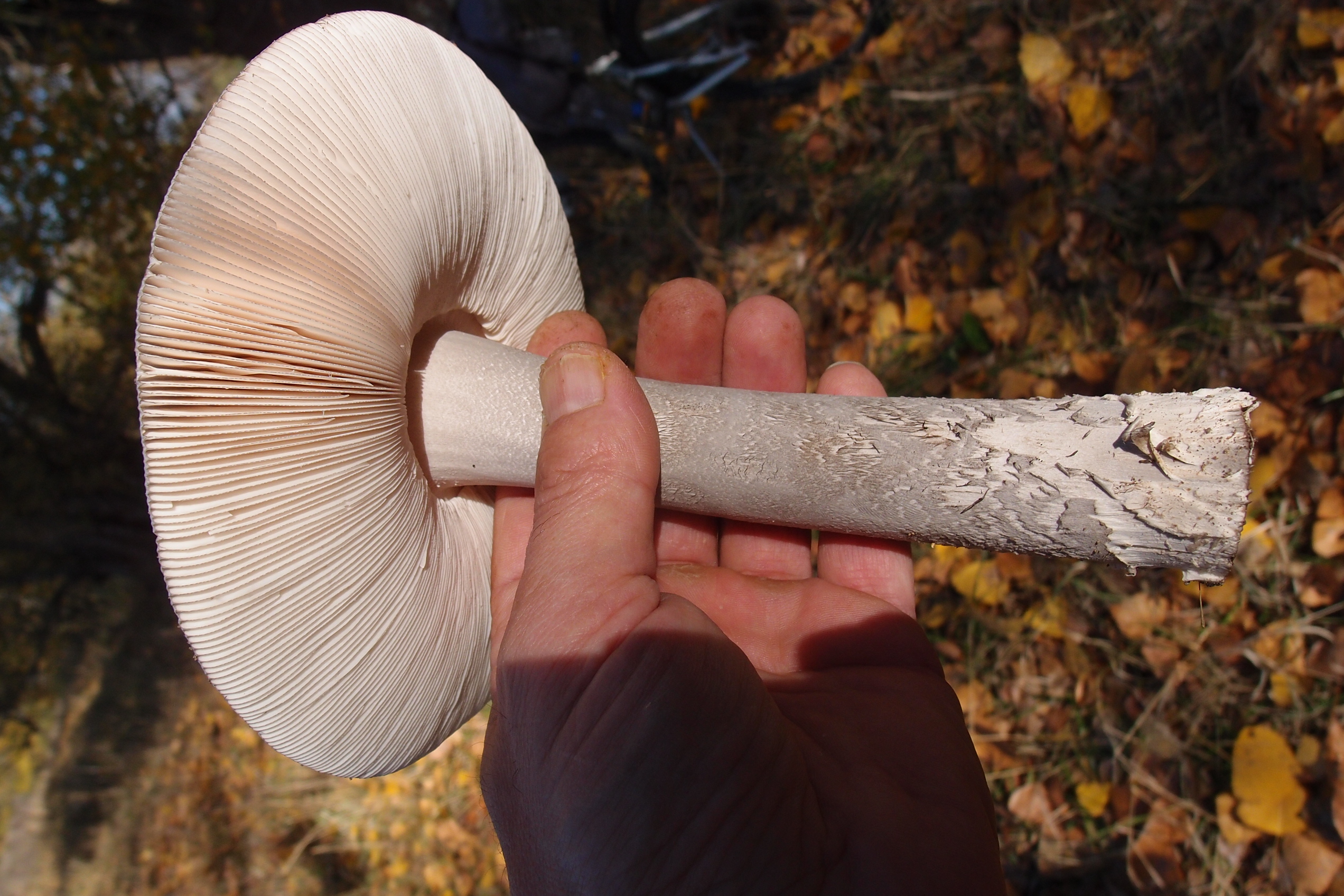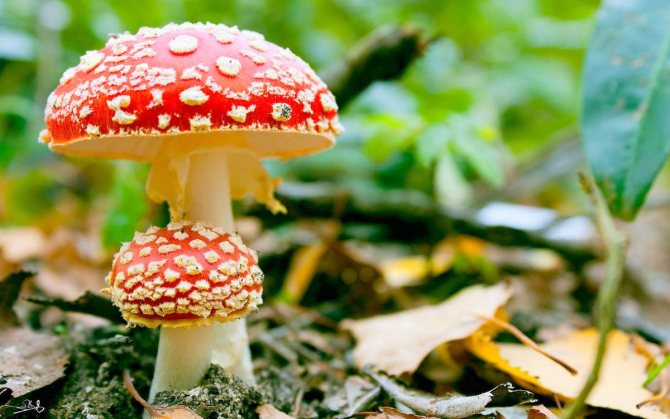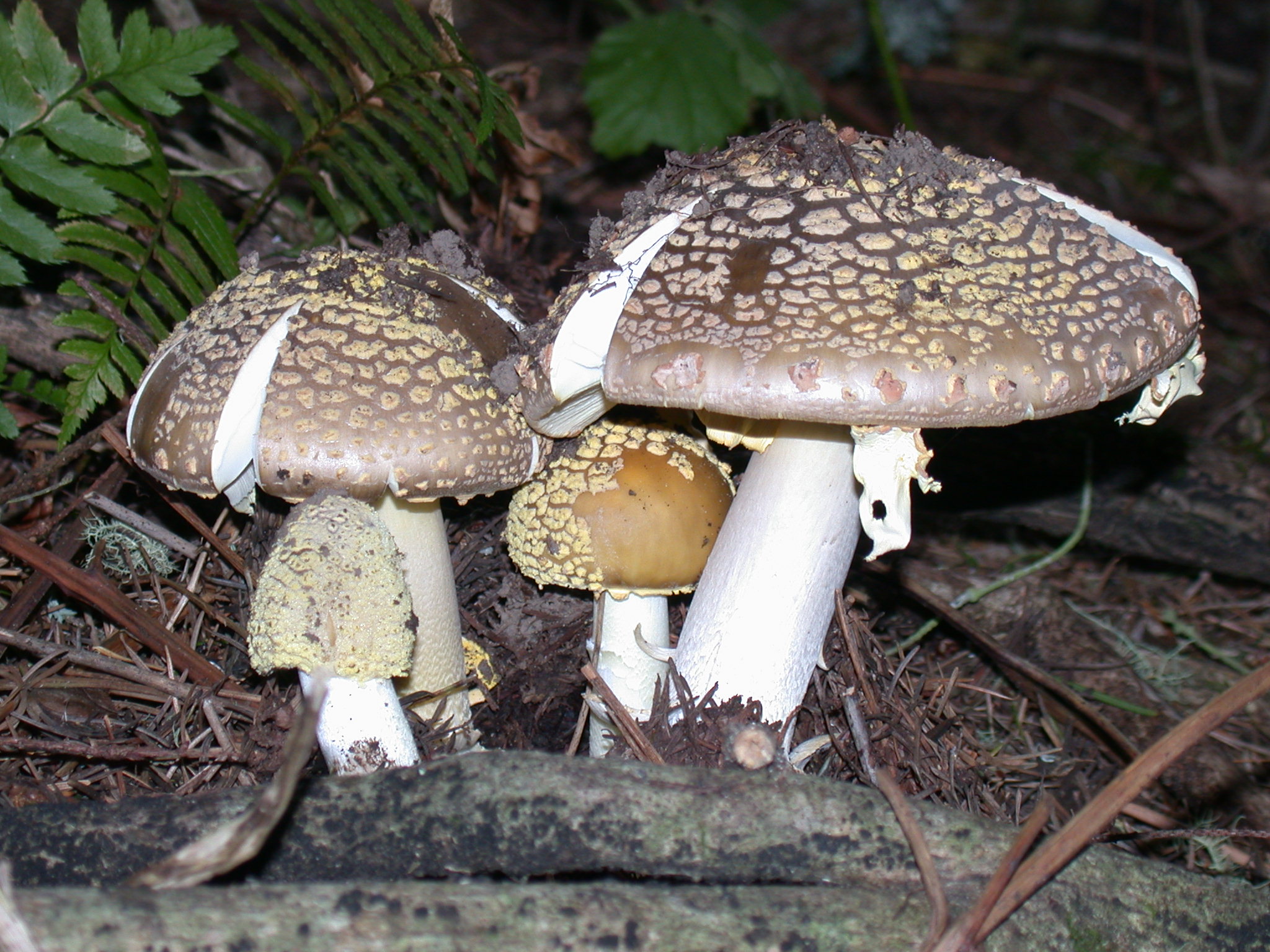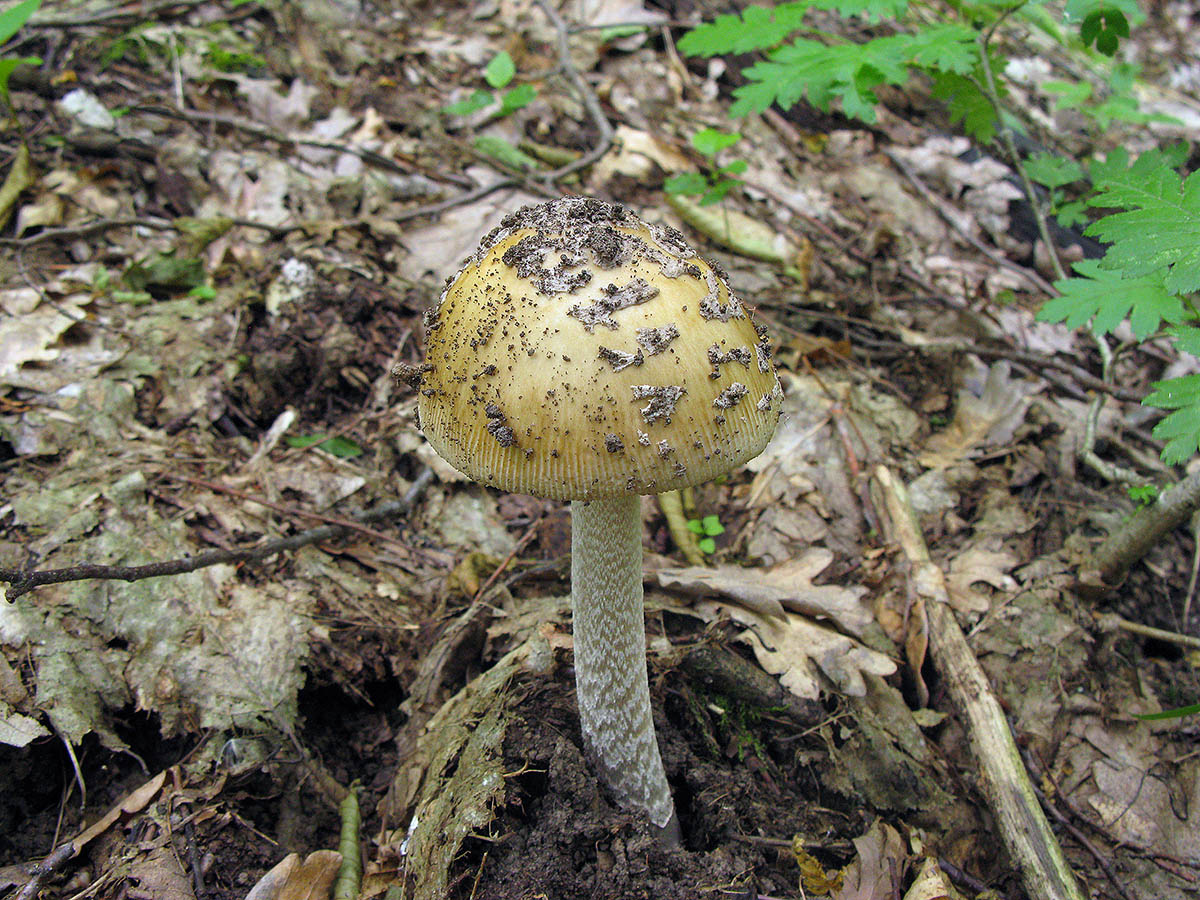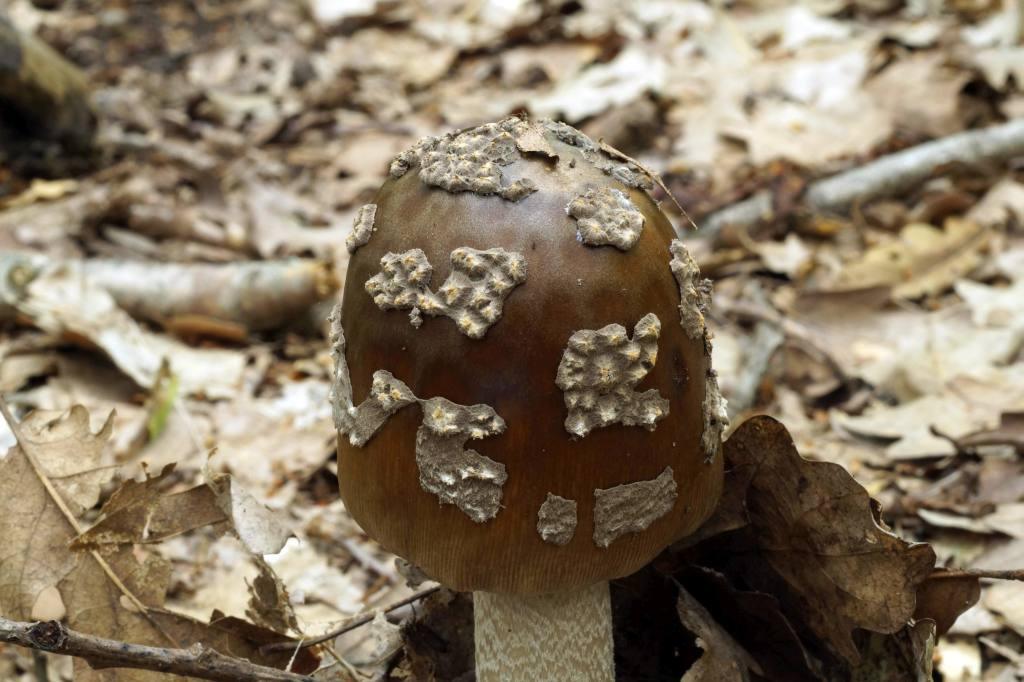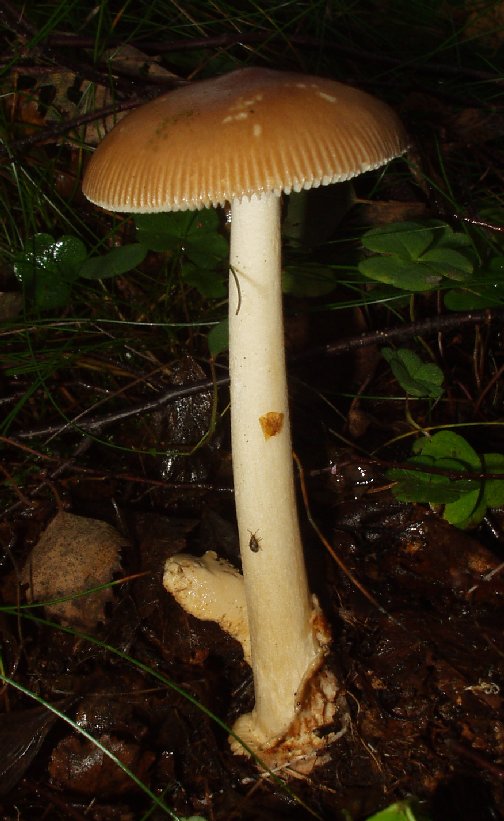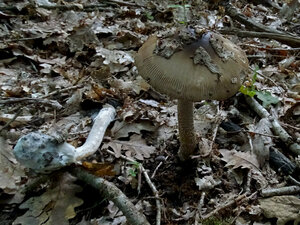Definitioner
- Basidia (Basidia)
-
Lat. Basidia. A specialized structure of sexual reproduction in fungi, inherent only in Basidiomycetes. Basidia are terminal (end) elements of hyphae of various shapes and sizes, on which spores develop exogenously (outside).
Basidia are diverse in structure and method of attachment to hyphae.
According to the position relative to the axis of the hypha, to which they are attached, three types of basidia are distinguished:
Apical basidia are formed from the terminal cell of the hypha and are located parallel to its axis.
Pleurobasidia are formed from lateral processes and are located perpendicular to the axis of the hypha, which continues to grow and can form new processes with basidia.
Subasidia are formed from a lateral process, turned perpendicular to the axis of the hypha, which, after the formation of one basidium, stops its growth.
Based on morphology:
Holobasidia - unicellular basidia, not divided by septa (see Fig. A, D.).
Phragmobasidia are divided by transverse or vertical septa, usually into four cells (see Fig. B, C).
By type of development:
Heterobasidia consists of two parts - hypobasidia and epibasidia developing from it, with or without partitions (see Fig. C, B) (see Fig. D).
Homobasidia is not divided into hypo- and epibasidia and in all cases is considered holobasidia (Fig. A).
Basidia is the place of karyogamy, meiosis and the formation of basidiospores. Homobasidia, as a rule, is not functionally divided, and meiosis follows karyogamy in it. However, basidia can be divided into probasidia - the site of karyogamy and metabasidia - the site of meiosis. Probasidium is often a dormant spore, for example in rust fungi. In such cases, probazidia grows with metabasidia, in which meiosis occurs and on which basidiospores are formed (see Fig. E).

See Karyogamy, Meiosis, Gifa.
- Pileipellis
-
Lat. Pileipellis, skin - differentiated surface layer of the cap of agaricoid basidiomycetes. The structure of the skin in most cases differs from the inner flesh of the cap and may have a different structure. The structural features of pileipellis are often used as diagnostic features in descriptions of fungi species.
According to their structure, they are divided into four main types: cutis, trichoderma, hymeniderma and epithelium.
See Agaricoid fungi, Basidiomycete, Cutis, Trichoderma, Gimeniderm, Epithelium.
Fly agaric yellowish brown
Let's discuss the properties and appearance of a completely edible fly agaric, which is nevertheless ignored not only by novice mushroom pickers, but also by experienced ones.
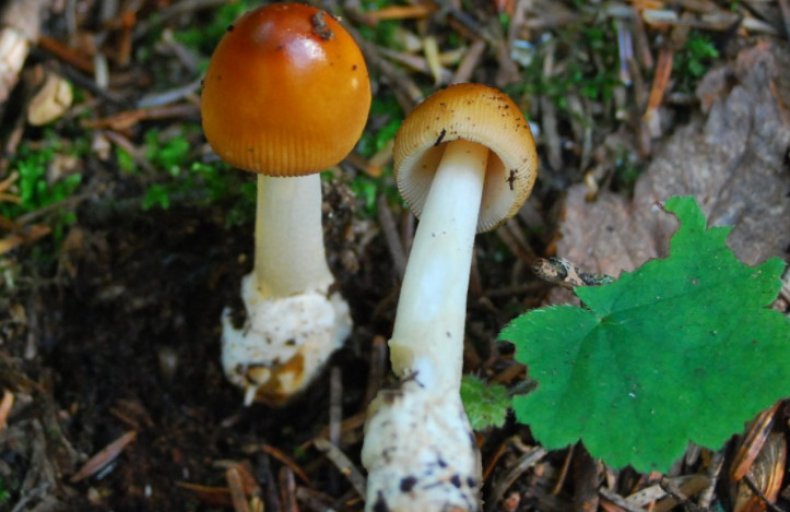
Eating
Another conditionally edible mushroom that can be eaten, but only after heat treatment. In its raw form, it is dangerous to humans.
It is not very popular, not only because it can be confused with dangerous specimens, but also because of the lack of a fleshy cap.
Did you know? The poisonous fly agaric contains two dangerous ingredients: muscarine and muscaridin. Interestingly, the former causes kidney failure, while the latter has an intoxicating effect, but at the same time blocks the action of the former. As a result, a person survives if the amount of muscarine and muscaridine is approximately the same.
Other name
People called this species "float", which is why the following alternative names appeared: red-brown float, brown float, orange fly agaric. The Latin name is Amanita fulva.

What does it look like
- The hat has a diameter of 5 to 8 cm and is colored golden brown or brownish orange. To the touch, you can feel the mucus covering this organ of the fungus. Young fly agarics have a domed cap, and fully formed ones have a flat one. A dark spot is clearly visible in the center of the cap, and there is also a noticeable tubercle.The ribbing of the surface is clearly visible at the edges.
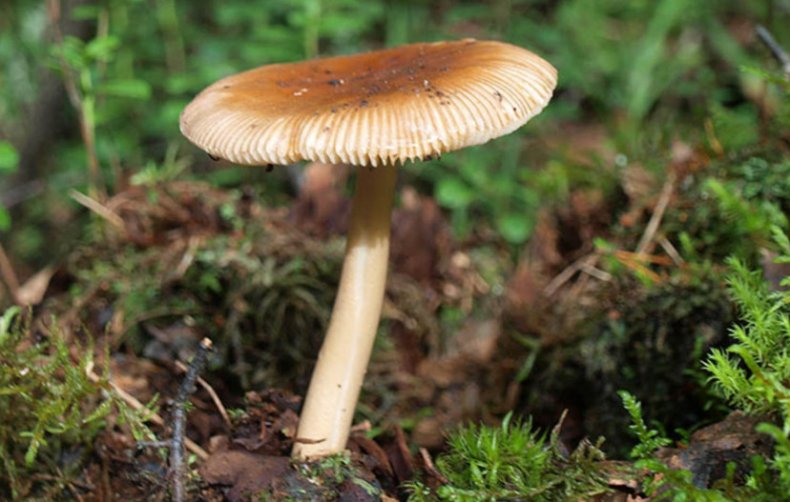
The leg is fragile, since it is hollow inside. The average length is 10 cm, but it can grow up to 15 cm. The diameter rarely exceeds 1 cm, there is a noticeable thickening in the lower part. The color is white, in rare cases there is a brownish tint.
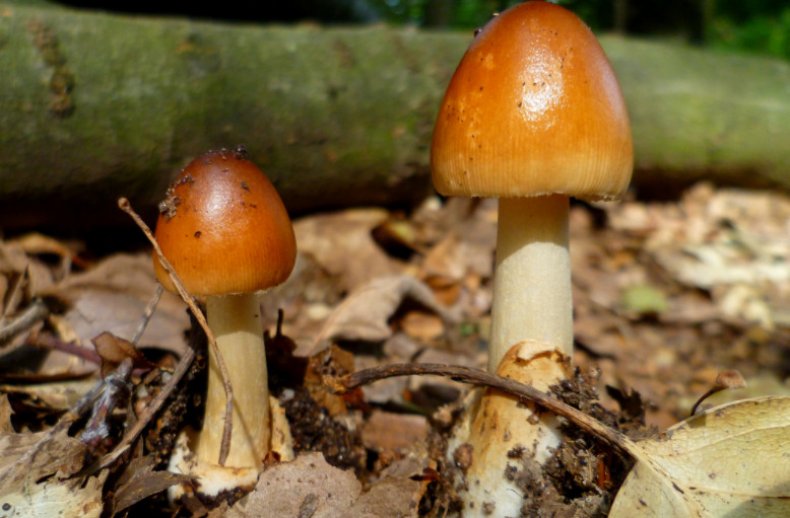
The flesh is thin, almost absent closer to the edges. Painted white. Differs in wateriness, as well as lack of smell.
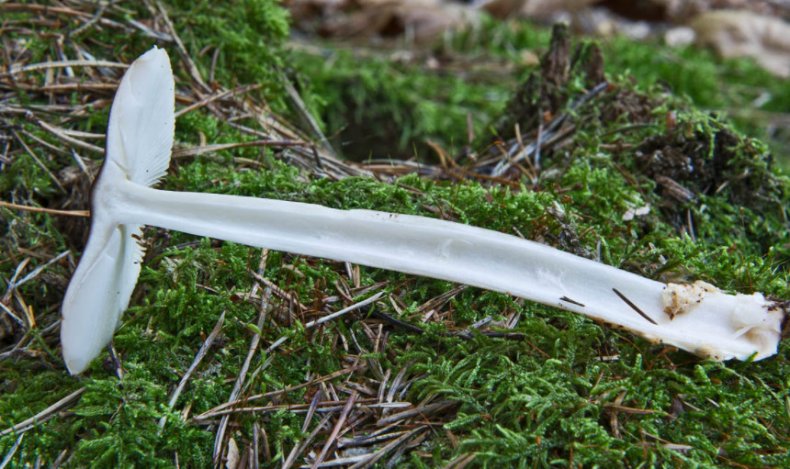
The plates are free, often located, are cream or pure white in color.
When and where it grows, doubles
The variety loves waterlogged swampy soils, therefore, it forms mycorrhiza with those trees that grow in such places. Found in both pine and deciduous forests. It is interesting that the float can be found not only in Eurasia, but also in North America, as well as in Africa. The mushroom also reached the Japanese islands.
The formation of the aboveground body occurs from July to October.
Important! There are both single mushrooms and groups. It is easy enough to be confused with other types of the so-called float, but this is not critical, since they are conditionally edible
The absence of a ring helps to distinguish from poisonous fly agaric
It is easy enough to be confused with other types of the so-called float, but this is not critical, since they are conditionally edible. The absence of a ring helps to distinguish from poisonous fly agaric.
What can be interesting about the mushroom mushroom.
The "face" of all fly agaric is the well-known red fly agaric. Despite its notoriety, the fly agaric is not as poisonous as it is commonly believed. Its toxicity is only average. For a person who ate this mushroom to die, it will take more than one or two mushrooms. True, the usual vomiting or dizziness can occur from one fly agaric cap. But the main reason that makes people collect the red fly agaric is its healing power.
Amanita muscaria (and some of its other relatives) are practically indispensable in folk medicine. Treatment recipes for a wide variety of diseases include this mushroom. Unfortunately, these recipes have not passed clinical trials, so we can only hope that such centuries-old popularity among healers is not at all accidental. In addition, fly agaric is often used as a folk remedy for controlling insects, in particular with flies. Although in the modern world this property is practically not used.
Fly agaric (Amanita franchetii)
Amanita franchetii is a mushroom belonging to the Amanitov family, genus Amanita.
External description of the mushroom
Rough fly agaric (Amanita franchetii) is a fruiting body with a semi-circular, and later - a spread cap and a whitish leg with yellowish flakes on its surface.
The diameter of the cap of this flu is from 4 to 9 cm. It is quite fleshy, has a smooth edge, is covered with a yellowish or olive skin, and itself has a brownish-gray color. The mushroom pulp itself is white, but when damaged and cut it becomes yellowish, exudes a pleasant aroma, and has a good taste.
The leg of the mushroom has a slightly thickened bottom, tapers upward, initially dense, but gradually becomes hollow. The height of the mushroom leg is from 4 to 8 cm, and the diameter is from 1 to 2 cm. The hymenophore part, located on the inner side of the mushroom cap, is represented by the lamellar type. The plates can be located in relation to the leg freely, or slightly adhere to it with a tooth. They are often located, characterized by expansion in their middle part, white. With age, their color changes to yellowish. These plates contain white spore powder.
The remains of the bedspread are represented by a weakly expressed Volvo, which is distinguished by its looseness and dense accretion. They are grayish-yellow in color. The mushroom ring is characterized by an uneven edge, the presence of yellow flakes on its whitish surface.
Habitat and fruiting period
Amanita franchetii grows in mixed and deciduous forests, prefers to settle under oaks, hornbeams and beeches. Fruit bodies are found in groups and grow on the soil.
The fungus of the described species is widespread in Europe, in the Caucasus, Central Asia, Vietnam, Kazakhstan, Japan, North Africa and North America. Amanita muscaria fruiting occurs most actively during the period from July to October.
Edibility
There is no reliable information about the edibility of the mushroom. In many literary sources, it is designated as an inedible and poisonous mushroom, so it is not recommended to eat it.
Similar species, distinctive features from them
The rare distribution of the rough fly agaric and the specific signs of the fruiting body make this type of mushroom unlike other varieties of mushrooms from the genus Amanita.
Interesting information about the rough fly agaric
At this point in time, it is not reliably known whether the rough fly agaric is an inedible or, conversely, an edible mushroom. Some of the authors of books on mycology and mushroom science note that this type of mushroom is inedible, or nothing is known for certain about its edibility. Other scientists say that the fruiting bodies of the rough fly agaric are not only completely edible, but also have a pleasant aroma and taste.
In 1986, the scientist-researcher D. Jenkins discovered the fact that in the Persona herbarium the scabies are represented by the type Lepiota aspera. In addition, E. Fries created a description of the mushroom in 1821, in which there was no indication of the yellowish tint of the Volvo. All these data made it possible to classify the fungus Amanita aspera as a homotypic synonym for the fungus Lepiota aspera, and as a heterotypic synonym for the fungus of the species Amanita franchetii.
Interesting facts about the red fly agaric
- The toxic effect of red fly agaric on insects has been actively used since the Middle Ages, when chopped mushroom pulp was placed in a container with water, and then placed in the kitchen and in other rooms with a large accumulation of flies. At the same time, it was believed that insects die due to the effects of substances contained in red fly agaric. But actually it is not. The cap of a mature red fly agaric growing in the forest collects moisture on its surface, in which alkaloids dissolve, and insects, having drunk this liquid, simply fall asleep and drown. The same thing happens in a plate with pieces of red fly agaric: if you take out the sleepy fly and put it next to it, after 10-12 hours the insect will sleep out and calmly fly away.
- Some forest mammals (deer, elk, bears and squirrels) enjoy eating red fly agarics, but the significance of mushrooms for the animal's body has not yet been established.
Fly agaric (Amanita excelsa)
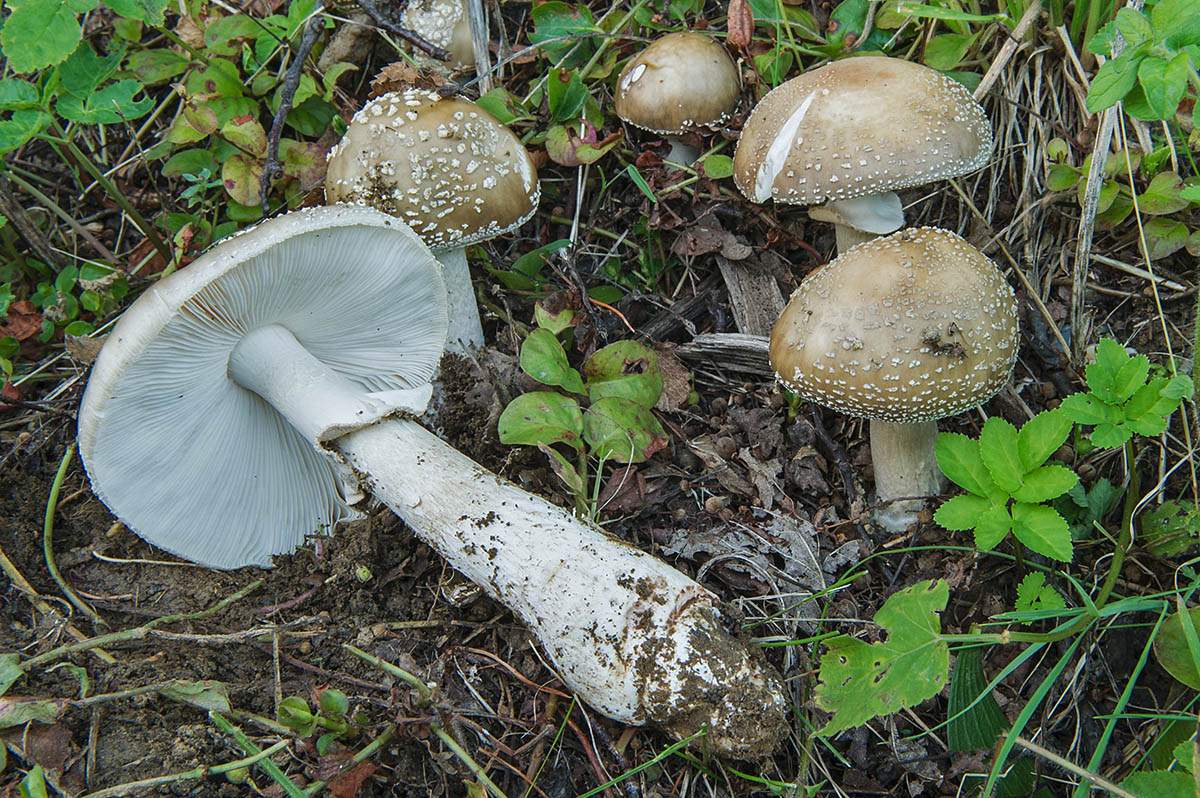
Amanita muscaria - oddly enough it sounds, a conditionally edible species from the Amanita family. And although it can be eaten, most mushroom pickers bypass it, since it does not have a special taste. Rather, on the contrary - this mushroom is frankly tasteless with an earthy taste and a radish smell. And it can also be confused with a poisonous panther fly agaric and the consequences of such a meeting will be very sad. Therefore, the editors of the site recommend that you read the description, but do not collect this mushroom.
Synonyms: chunky fly agaric, Amanita spissa
Appearance 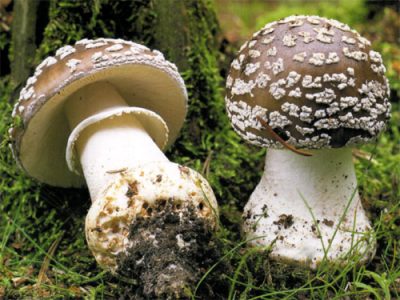
The leg of a thick fly agaric is whitish, along its entire surface there is a mesh pattern of a grayish shade. A large and fairly sturdy ring is located at the top. The leg has a clavate tuber with warty remnants of the shell.
Spore powder is white.
The pulp is quite hard and tough, white or grayish in color, and resembles a turnip in taste and smell.
The hat, as a rule, is from 6 to 12 cm in diameter, sometimes it reaches 15 cm, but this is in rare cases. Its shape changes over time - in young specimens, the shape of the cap is ovoid, and over time it becomes prostrate and flat, with an even edge.The color of the upper part of the cap is gray-brown, and on its sticky and shiny surface there are remnants of a volva - a lot of white scales.
The plates are free, even, white, however, near the legs they become narrower.
Musty taste, gives off earth.
Spread and growth time

Growing time is summer and autumn months. The very first specimens can already be found in June (more often in August), then they bear fruit throughout September, and by the end of October, as a rule, they are very rare.
Edibility
Amanita muscaria is a conditionally edible mushroom, but it does not have a special taste, since even after a long boiling, its specific taste and smell remains. Therefore, mushroom pickers do not hunt for him. Due to the fact that this species can be confused with poisonous relatives, it is not worth taking the risk and collecting these fly agarics in order to eat them.
Amanita spissa lookalikes 
This edible fly agaric species is very similar to its poisonous congener - such a similar panther fly agaric (Amanita pantherina). It is very difficult for novice mushroom pickers to distinguish between edible and poisonous mushrooms. Therefore, it is much better to skip one or two edible mushrooms than to poison yourself later because of your mistake. Moreover, this type of fly agaric does not shine with excellent taste!
Related species
One of the related mushrooms is the poisonous fly agaric. It is dangerous because it can cause suffocation, severe indigestion, fainting and even death. However, it is quite easy to identify this poisonous fly agaric, if you are careful - it has a bright red, or orange-red cap, rather large, which changes its shape from spherical to flat with age. There are warts on the cap - dazzling white or slightly yellowish.
The pulp of this dangerous species is white with a mild, pleasant, mushroom aroma. The leg is white, with a white ring, strong, there are rows of warts on it.
You can meet red fly agarics in a variety of forests, most often under birches. However, despite the danger and toxicity of this mushroom, it is quite actively used in everyday life. Not for food, of course, but in order to get rid of flies. To do this, put a mushroom cap in a plate of water, sprinkle it with sugar on top and put it indoors. Flies flock to this poisonous sugar-mushroom syrup and die very quickly.
Another related mushroom is the bright yellow fly agaric. This is also a poisonous representative of its family. Moreover, its toxicity is fatal, and therefore it is very dangerous. The time of its growth and fruiting falls on summer and early autumn, and this coincides with the growth time of the thick fly agaric. However, a poisonous mushroom is easily distinguished from an edible relative by its appearance.

The poisonous bright yellow fly agaric has a hat (as you might guess from the name) - a bright yellow color (there is still a lemon color or yellow-orange). There are a lot of flakes on the surface of the cap - these are the remains of a Volvo. The aroma is reminiscent of a radish. The stem is rather fragile, with a velvety surface, sometimes elongated, with a ring, which can disappear as the fungus grows.
Where does the red fly agaric grow?
Amanita muscaria and its varieties can be symbiotic with birches, spruces, oaks, poplars, willows; they grow widely on damp acidic soils. The poisonous mushroom grows in abundance in coniferous, mixed and deciduous forests, along the edges of meadows and fields, and is often found in city parks and squares. Usually appears in the middle or late summer and bears fruit until October; in productive years, the first bright caps of red fly agaric begin to delight the eye in June. The range of the red fly agaric includes the countries of Europe and Asia, North and South America, the territory of Australia, South Africa and New Zealand.
How to distinguish false mushroom counterparts?
The closest analogue, which is common in Russia and other European countries, is the gray float. To the category of twins of the black fly agaric also include the pale toadstool.All the differences between these mushrooms can be seen in the photo or carefully studied in the table:
| Mushroom name | External distinctive features | Growing places | Edibility |
| Black float | The cap color ranges from dark brown to almost black. | Coniferous forests, less often deciduous, fruiting period - October - December. | Conditionally edible |
| Death cap | The color of the cap is from white to yellowish-brown-olive, there is a white, striped ring on the stem. | Occurs from late July to late autumn, rather rarely. Grows in coniferous and mixed forests. | Deadly poisonous |
| Gray float Amanita vaginata | Loose bag-shaped volva, there is no ring on the leg, the color of the cap is often light gray with a bias towards yellow. | Forms mycorrhiza with birch, grows in deciduous and mixed forests. Fruiting time is July - September. | Edible, but not popular with mushroom pickers because of the fragile pulp, unattractive appearance. |
It's important to know! The main difference between the extremely poisonous pale toadstool and other mushrooms is the presence on the leg of a characteristic "skirt", a ring. The main differences between edible species include the presence of remnants of a blanket on the top of the cap, which protected the plant during the period of maturation.
The color of the pulp at the fracture site does not change. Well pronounced, i.e. having visible scars, the edges of the cap are another sign of the edibility of the fruiting body
The main differences between edible species include the presence of remnants of a blanket on the top of the cap, which protected the plant during adulthood. The color of the pulp at the fracture site does not change. Well pronounced, i.e. having visible scars, the edges of the cap are another sign of the edibility of the fruiting body.
Poisonousness and hallucinogenicity
One can talk about the toxicity of this mushroom for a long time. However, officially this mushroom was listed as a poisonous one not so long ago. However, this does not stop some fans of experiments from eating the toadstool for food. For this, the mushroom is boiled for a very long time and thermally processed, after which it is already prepared in the usual way, for example, fried or baked. It is believed that in this form, this mushroom will not lead to poisoning.
But still, do not forget that the toadstool contains not only poisonous, but also psychotropic substances, among which there is bufotenin. Also, some dose of solomanidin and phalloidin content is noticed. Therefore, even a pre-treated mushroom is bound to cause a slight stomach upset, which may end well. However, the potential threat still remains, and not everyone carefully approaches the process of preparing the mushroom before eating it.
As for the hallucinogenic properties of the mushroom, they are clearly manifested due to the contained alkaloids. There are cases when after a person ate a similar mushroom, he had hallucinations. The fact is that the substances contained in toadstool very much relax the nervous system. The person plunges into a state of euphoria completely. However, nervous excitement still remains at a high level.
What happens as a result?
The fact is that a person falls asleep, but since nerve impulses still remain in serious tension, all sounds that a person hears from the outside, even while in a state of sleep, acquire double strength.
Therefore, as soon as a person hears steps, for him they are heard as serious blows. Unfortunately, criminologists have recorded cases when people who ate a significant amount of toadstools, nevertheless, at some point were in a state of drug intoxication. As a result, they literally attacked their close relatives with knives, as a result of which a criminal case was opened against them. In order to prevent such a development of events, doctors advise, even for the sake of interest, not to eat the toadstool for food, as it can negatively affect the fragile psyche.
Amanita muscaria (Strange float): photo and description
| Name: | Amanita muscaria |
| Latin name: | Amanita ceciliae |
| Type of: | Inedible |
| Synonyms: | The float is strange |
| Specifications: | |
| Systematics: |
|
Amanita muscaria is a member of the extensive Amanita muscaria family. In Latin, the name sounds like Amanita ceciliae, the second name is Strange Float. It was identified and described by the British mycologist Miles Joseph Berkeley back in 1854.
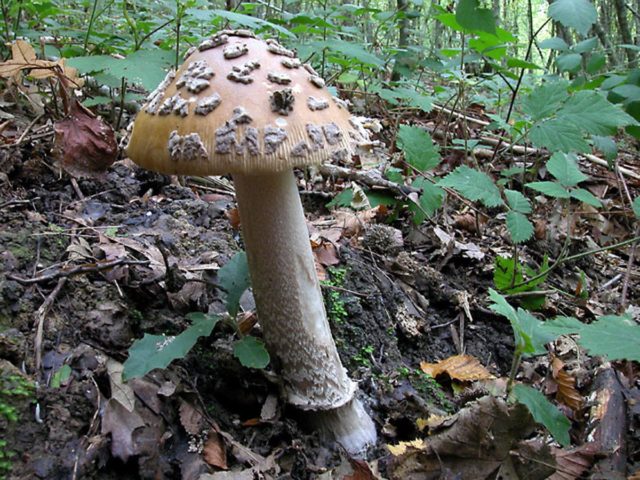
Description of the Sicilian fly agaric
This species has many characteristics in common with the rest of the Mukhomorovs. A lamellar mushroom with a wide cap and a thin stem. It differs from its relatives in the absence of a ring. Solitary representatives are more common, less often small clusters.
Description of the hat
The mushroom has a large fleshy cap, reaching 15 cm in diameter. In a young specimen, it is ovoid, eventually becomes convex, opens up. The surface has a yellowish brown or deep brown color, the edges are always lighter.

The view is distinguished by a large-sized hat
Leg description
The leg is thin and high, cylindrical, quite even. In length, it reaches 15-25 cm, in diameter 1.5-3 cm. In young specimens, it is painted in a pale pink or yellowish with a brown tint, as it ages, the color turns to gray. At the bottom there are remnants of a Volvo that darkens when pressed. The leg is at first dense, fibers are palpable in it, as it ages, it becomes hollow.

The leg length can be up to 25 cm
Where and how the Sicilian amanita grows
This species does not like only clay soils, it prefers broad-leaved and deciduous forest zones more. In Europe it is widespread, in Russia it is found in the Far East in the Primorsky Territory and in Yakutia. The mushroom also grows in Mexico. You can meet him from the last days of June until the very end of September.
Is the mushroom edible or not
Amanita muscaria is considered inedible. The pulp does not have a pronounced odor, it does not change its shade when cut. The pulp does not emit milky juice.
Doubles and their differences
The closest twins are other varieties of the Mukhomorovs. The main difference between the Sicilian is that it does not have a characteristic ring.
The most similar pearl species, with a gray pearl color and a ring on the leg, is edible.
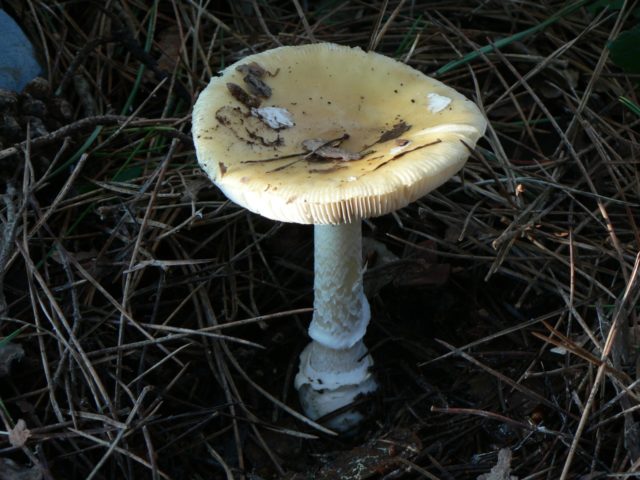
Another double is the Vittadini fly agaric, which is part of the conditionally edible group, has a ring and a veil. It is more common in the south of Russia.

Conclusion
Amanita muscaria Sicilian mycologists consider inedible. This mushroom is rare, it is easy to distinguish it from other Mukhomorovs by its characteristic color and the absence of a veil.
Description, composition, taxonomy and structural features of the fungus
The red fly agaric belongs to the poisonous psychoactive mushrooms of the genus Amanita (Amanita fly agaric), the Amanita family - Agaricaceae, class - Agaricomycetes. The Latin name is Amanita muscaria. The appearance of the name of the fungus is explained by its insecticidal properties against flies. The people may call it "old man", "toadstool", etc. The cost of a dried mushroom in different countries reaches 150 euros.
Hat
The size of this part of the fruiting body can grow in the range of 8–20 cm. At first, it has a hemispherical shape, then, as the mushroom matures, it opens and becomes flat and concave. Has a bright red hue (sometimes auburn). The skin is covered with white wart flakes of white color. There are flakes on the cap - the remains of the bedspread may fall off.
Hymenophore
This is what biologists call the bottom of the cap. The hymenophore is tubular, white in young hymenomycetes, yellowish in old ones.
Cut pulp
It is white and turns pale orange under the skin. When reacting with air, the shade of the pulp changes.The pulp is characterized by a slightly sweetish taste and subtle smell. Spores are smooth, ellipsoidal, whitish spore powder.
Leg
This part is 5–20 cm in height, with a diameter of 1–2.5 cm. The shape is cylindrical, the base is thickened, the color is from yellowish to white. As the fruiting body matures, the leg becomes hollow. In the upper part, you can find a filmy ring with uneven edges and a brown surface.
At the moment, the red fly agaric does not belong to the lists of entheogenic fungi and plants prohibited or controlled by law, it is not included in the Red Book. None of the hallucinogenic substances contained in it or their analogues are prosecuted for possession or distribution.
A bit of history
Scientists consider the northeast of Asia to be the birthplace of the fly agaric (possibly Beringia is a land that appeared several times on the site of the Bering Sea, and connected Eurasia and North America). The date of birth is approximately 20 to 30 million years ago.
Albertus Magnus in 1256 first mentioned this species in a scientific work, calling it "mushroom-fly", since the crushed fruit body was actually used against these insects. The type received its current name Amanita muscaria on January 1, 1821, thanks to the father of mycology, the Swedish naturalist Elias Magnus Fries. In the XX century, these data were revised, the date was changed to May 1, 1753.
Time and habitat
Habitat - coniferous, deciduous, mixed forests of the temperate climate of the Northern Hemisphere, especially common in birch or spruce forests with acidic soil. Forms mycorrhizal symbiosis with almost any tree. It can be found near redheads, boletus, chanterelles and other species.
Grows singly or in groups from June to mid-autumn. It grows almost everywhere in Russia. You don't have to look for it for a long time, the mushroom can be found in any forest. The species is considered poisonous, the collection is made only for medicinal purposes.
What is the reason for the red color of the fly agaric?
The bright orange, red color of the cap of this mushroom is due to the presence of the substance muscarufin in the fruiting body. It has anti-tumor and antibiotic properties.
In red fly agarics, it is not resistant, and in the North American Amanita Jackson, it is so bright and stable that it is used by the aboriginal population in order to dye fabrics.
Interesting facts and myths about the fly agaric
- It is considered a deadly poisonous mushroom, but this is not entirely true. Experts say that there are fewer toxins in it than in pale toadstool. The lethal dose is 3-4 kilograms. For a person weighing 75 kilograms, one mushroom is needed for mild poisoning to appear.
- In the troops of the Viking Normans, there were berserkers - violently insane warriors with a fierce character, rushing into the fight, sparing neither others, nor themselves, not paying attention to wounds. It is known that before the battle they ate amanita.
- Scientists have long denied the relative insecticidal properties of this species, proving that flies do not die from eating the fruiting body, but because they drown in the water accumulated in its cap. After the "drunken flies" were removed from the liquid, they woke up and flew away.
- The relative toxicity of amanita after several jams was successfully proved by mycologist Mikhail Vishnevsky, who suggests preparing these fruiting bodies in a fried form.
- The Altaians suggested that the red fly agaric be included in the Red Book, but this has not yet been done.
- Lovers of quiet hunting have a sign: if you find a black fly agaric, don't expect good.
Amanita muscaria is an amazingly beautiful representative of the mushroom kingdom! If you are not going to eat it or prepare healing potions from the fruit body, to be treated with a fly agaric, just leave it unharmed in the forest. Admire this beautiful creation of nature, it is worth decorating the world.
Properties of the red fly agaric
Dangerous toxic compounds with a pronounced psychotropic and toxic effect were found in the pulp of a red fly agaric:
- ibotenic acid is a psychoactive and neurotoxic substance that has a hallucinogenic effect and causes damage and death of brain cells;
- muscimol is a powerful psychoactive substance with a pronounced hypnotic effect, the highest concentration of which is found under the skin of the cap;
- muscarine - an alkaloid that causes poisoning with characteristic symptoms: from decreased blood pressure, nausea and vomiting to suffocation and death;
- Muskazone is a psychoactive toxin that causes memory loss, disorientation and loss of vision.
Due to its remarkable appearance, serious poisoning with a red fly agaric occurs extremely rarely, since everyone knows that a red fly agaric is a poisonous mushroom. If this mushroom accidentally gets into food together with edible mushrooms, the concentration of poisons and toxins is relatively small. The lethal dose for adults is about 15 hats, a child will need much less, therefore, it is necessary to acquaint children with a beautiful, but very dangerous mushroom from early childhood.

Photo by: Onderwijsgek
Panther fly agaric: description, properties
Hat: in a young mushroom, it looks like a hemisphere with a diameter of 5 to 11 cm. In an adult mushroom, it becomes flat, and its edges are ribbed. Inside the cap, the flesh is watery and generally white in color.

Amanita pantherina
The cylindrical leg has a height of 5 to 13 cm, which expands from top to bottom. Has a white or light gray ring-shaped volva. Sometimes there are small villi along the entire length of the leg, as well as a very fragile ring.
The plates are almost indistinguishable from those of the red fly agaric; in an adult mushroom, there may be subtle brown spots on the plates. If the mushroom is broken, it emits an unpleasant and very pungent smell, according to many, similar to the smell of fresh radish.
The panther fly agaric counterparts are pink-gray (Amanita rubescens) and thick (Amanita spissa) fly agarics. The first is distinguished by pulp, which turns pink after breaking and the presence of a streak pattern on the surface of the ring. In the second (thick fly agaric), the Volvo looks like a collar, and the flesh is much more fleshy.

Amanita pantherina
Prefers coniferous and especially pine forests. In deciduous forests, if it is found, it is only under the pines. In the Northern Hemisphere, it grows in temperate latitudes from mid-summer to October.
It is very poisonous and therefore is not eaten. Also not used in traditional medicine. The toxic substances that are contained in the panther fly agaric are close to the poison of dope and henbane. If they fall into the human body, the effect is about the same as when arsenic is ingested. The only use humans have found for this fungus is as a powerful insect pest control.
Description of gray-pink fly agaric
The diameter of the gray-pink fly agaric cap ranges from 6 to 20 centimeters, but specimens with a cap diameter of no more than 15 centimeters are more common. The shape of the cap is initially ovoid or hemispherical, then it transforms into a convex one, and in older specimens it becomes flat-spread, in the center without a noticeable tubercle.
The skin of the cap is most often gray-pink in color, but can be red-brown or meat-red. The skin is shiny and slightly sticky.
The pulp of the pearl mushroom is fleshy, white, without a special smell, with a weak taste. If the pulp is damaged, it gradually becomes colored - at first it becomes light pink, and then acquires a characteristic wine-pink color.

The length of the leg of the reddening fly agaric is 3-10 centimeters, but sometimes it can reach 20 centimeters in length, and the diameter ranges from 1.5 to 3 centimeters. The shape of the leg is cylindrical. At first, the leg is solid, and then it becomes hollow. The color of the leg is pinkish or white, the surface of the leg is tuberous. At the base of the stem is a tuberous thickening, this thickening is often damaged by insects, streaking them with numerous passages.
The plates are white, often located, wide, free. If you touch the plates, then they turn red, the same happens with the cap and the leg. There is a wide ring on the leg - the remainder of the bedspread. The ring is hanging, filmy, at first white, and then it turns pink. There are pronounced grooves on the top of the ring.
On the cap there are warty flakes or in the form of filmy scraps, their color from white to off-white. Elliptical spores. Whitish spore powder.

Places of growth of pearl fly agaric
Amanita muscariae form mycorrhiza with coniferous and deciduous trees, especially with pine and birch. Amanita muscariae can grow on any soil. They are found everywhere in the temperate regions of the Northern Hemisphere. These mushrooms bear fruit either singly or in small groups. The harvesting season is from spring to late autumn, most often from July to October.
Symptoms of red fly agaric poisoning
Symptoms of red fly agaric poisoning can appear immediately after eating fresh or processed mushrooms, and the use of alcoholic tinctures has a cumulative effect when signs of poisoning appear after a while. In any case, ibotenic acid and muscimol, ingested with the pulp of poisonous mushrooms, provoke a number of dangerous symptoms. A person has:
- nausea, repeated vomiting, increased salivation;
- excessive sweating;
- lowering blood pressure;
- increased heart rate;
- difficulty breathing up to suffocation;
- convulsions;
- loss of consciousness.
In case of especially severe poisoning and the absence of timely assistance from qualified doctors, death will inevitably occur.

Amanita muscaria - description, characteristics
Hat
Young red fly agarics have a spherical cap, which over time takes the form of a flat and sometimes concave saucer. The diameter of the cap ranges from 8 to 20 cm, rarely reaches 25 cm. The shiny skin is usually bright orange or red in color of varying degrees of intensity, often covered with a sticky, slimy secretion. In North America, there are varieties of red amanita that have a white or yellow cap.
The surface of the cap is strewn with layers of warty scaly flakes of white color - the remnants of a blanket that protects the fruit body of young mushrooms. In old fly agarics, these characteristic growths can be washed off by rain, in young ones they often fly around. There is also a variety of red fly agaric that does not have flakes (for example, Amanita muscaria var.aureola).
The edges of the cap can be striped (covered with ribs).

LPs
The inner surface of the cap of the red fly agaric is formed by frequent, free plates 6-12 mm wide, between which there are many intermediate plates.
In young mushrooms, the color of the plates is pure white or cream, with age it acquires a yellowish tint.

Leg
The leg of the red fly agaric is white or slightly yellowish, grows from 8 to 20 cm in height, has a thickness of 1 to 3.5 cm and is distinguished by a cylindrical shape with a tuberous thickening at the base.
In young mushrooms, the leg is dense, as it grows, it becomes hollow.

Remains of the bedspread
At the top of the leg, a fibrous filmy ring-skirt with uneven edges and a ribbed surface is clearly defined, falling down in a wide flounce.
In the lower part of the leg, there is an adherent multilayer vagina in the form of several rings.

Pulp
The pulp of the red fly agaric is white, under the skin of the cap it is pale orange or yellowish. Does not change color on cut. The taste is sweetish. The smell is expressionless.

Photo Credit: Casliber
Disputes and Spore Powder
Spore powder of white fruit body. Spores are smooth, colorless, ellipsoidal, 10-12 x 6-7 microns in size.
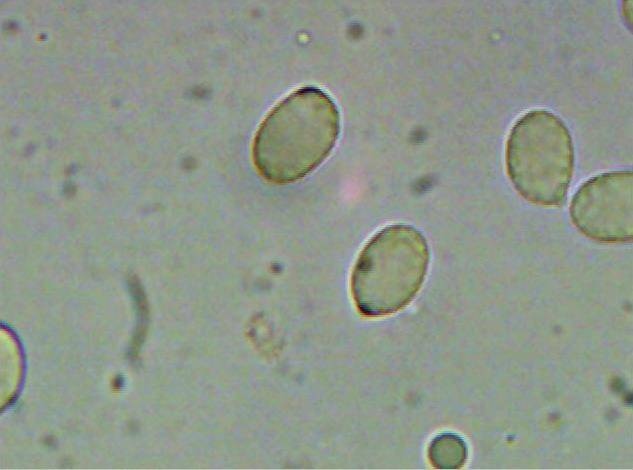
Photo Credit: Madjack74

